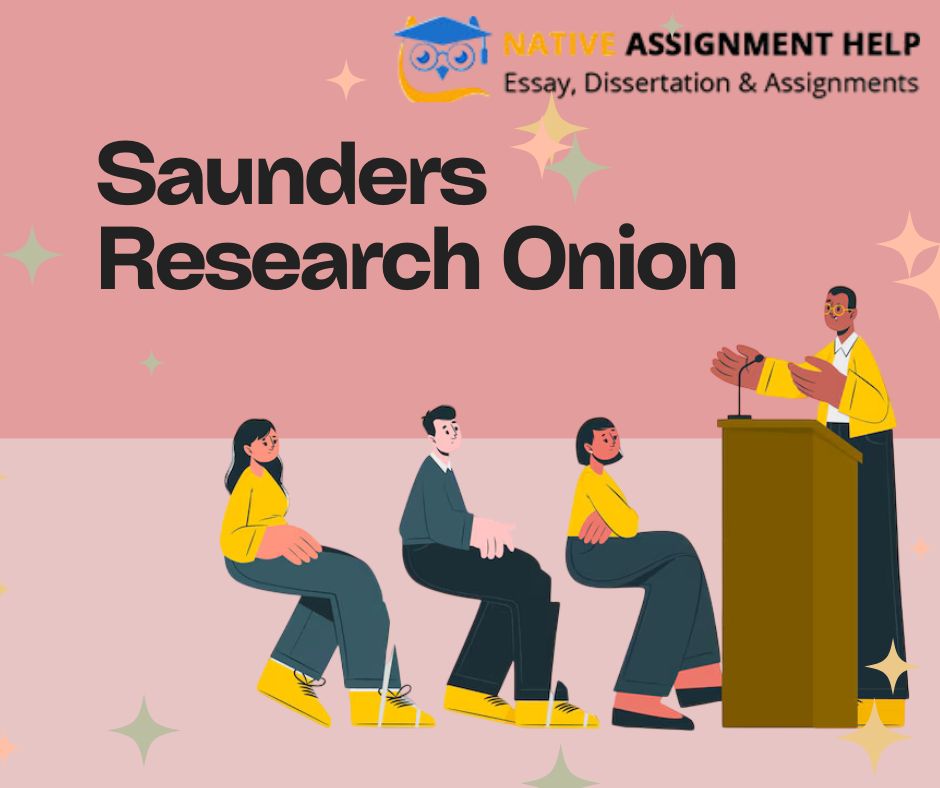The Power of the Saunders Research Onion in Structuring Research Approaches

Strong 8k brings an ultra-HD IPTV experience to your living room and your pocket.
Introduction
Research is the backbone of academic and professional advancement, providing a systematic way to explore, understand, and address complex problems. However, designing a robust research project can be daunting without a clear framework. This is where the Saunders Research Onion, introduced by Saunders, Lewis, and Thornhill in their seminal work Research Methods for Business Students (2007), becomes an invaluable tool. The Research Onion is a layered model that guides researchers through the process of structuring their research by breaking it down into manageable components. Each layer represents a critical aspect of the research process, from philosophical foundations to data collection methods. This article explores the power of the Saunders Research Onion in structuring research approaches, highlighting its versatility, clarity, and applicability across disciplines.
Understanding the Saunders Research Onion
The Saunders Research Onion is a visual metaphor for the research process, depicted as a series of concentric layers, each addressing a distinct element of research design. Starting from the outermost layer and moving inward, the model covers research philosophy, approach, strategy, methodological choice, time horizon, and data collection and analysis techniques. By addressing these layers systematically, researchers can develop a coherent and logical research plan. The onion’s structured approach ensures that no critical aspect is overlooked, making it particularly useful for novice researchers and seasoned academics alike.
Layer 1: Research Philosophy
The outermost layer of the Research Onion is research philosophy, which forms the foundation of any study. This layer addresses the researcher’s worldview and assumptions about the nature of knowledge and reality. Common philosophies include:
Positivism: Emphasizes observable, objective facts and often aligns with quantitative methods.
Interpretivism: Focuses on subjective meanings and human experiences, typically associated with qualitative research.
Realism: Combines elements of positivism and interpretivism, acknowledging both objective and subjective realities.
Pragmatism: Prioritizes practical solutions, allowing flexibility in combining methods.
Choosing a philosophy shapes the entire research process, influencing how questions are framed and data is interpreted. For example, a positivist researcher studying employee productivity might use statistical analysis, while an interpretivist might explore employee experiences through interviews. The Research Onion ensures researchers consciously select a philosophy that aligns with their objectives, setting a solid foundation.
Layer 2: Research Approach
The next layer involves selecting a research approach, which determines how theory is used in the study. The two primary approaches are:
Deductive: Starts with a hypothesis based on existing theory and tests it through data collection. This is common in quantitative research.
Inductive: Builds theory from observations, often used in qualitative research to identify patterns and themes.
The Research Onion encourages researchers to align their approach with their philosophy. For instance, a positivist study might use a deductive approach to test hypotheses, while an interpretivist study might adopt an inductive approach to explore emerging themes. This layer ensures theoretical consistency, guiding researchers toward appropriate methodologies.
Layer 3: Research Strategy
The research strategy layer defines the overall plan for conducting the study. Strategies include experiments, surveys, case studies, ethnography, grounded theory, and action research, among others. Each strategy suits specific research questions and contexts. For example, a case study is ideal for in-depth exploration of a single organization, while a survey suits broader, generalizable data collection. The Research Onion helps researchers select a strategy that aligns with their philosophy and approach, ensuring methodological coherence.
Layer 4: Methodological Choice
This layer focuses on the choice between quantitative, qualitative, or mixed methods. Quantitative methods involve numerical data and statistical analysis, while qualitative methods emphasize non-numerical data, such as interviews or observations. Mixed methods combine both, leveraging their strengths for a more comprehensive analysis. The Research Onion encourages researchers to justify their methodological choice based on the research question and objectives, ensuring the chosen method effectively addresses the study’s aims.
Layer 5: Time Horizon
The time horizon layer addresses whether the study is cross-sectional (data collected at one point in time) or longitudinal (data collected over an extended period). Cross-sectional studies are quicker and suit snapshot analyses, while longitudinal studies track changes over time, offering deeper insights into trends. The Research Onion prompts researchers to consider time constraints and research goals when selecting a time horizon, ensuring practical and feasible study design.
Layer 6: Data Collection and Analysis
The innermost layer focuses on the techniques and procedures for collecting and analyzing data. This includes selecting tools like questionnaires, interviews, focus groups, or observations for data collection, and methods like statistical analysis, thematic analysis, or content analysis for data interpretation. The Research Onion ensures that these techniques align with the outer layers, maintaining consistency throughout the research process.
The Power of the Research Onion
The Saunders Research Onion’s strength lies in its ability to provide a clear, systematic framework for designing research. Below are key reasons why it is a powerful tool:
1. Clarity and Structure
The layered approach breaks down the complex research process into manageable steps. By addressing each layer sequentially, researchers can systematically build their study, reducing the risk of overlooking critical components. This clarity is particularly beneficial for novice researchers who may feel overwhelmed by the complexity of research design.
2. Flexibility Across Disciplines
The Research Onion is not limited to a specific field. Whether in business, social sciences, education, or healthcare, the model’s principles apply universally. Researchers can adapt the framework to suit their discipline, making it a versatile tool for diverse research contexts.
3. Alignment and Coherence
By requiring researchers to align each layer with the others, the Research Onion ensures methodological coherence. For example, a positivist philosophy naturally leads to a deductive approach, quantitative methods, and statistical analysis. This alignment enhances the study’s credibility and validity.
4. Encourages Reflexivity
The Research Onion prompts researchers to reflect on their assumptions and choices at each layer. This reflexivity helps researchers justify their decisions, ensuring the study is robust and defensible.
5. Practical Application
The model is practical and user-friendly, making it accessible to researchers at all levels. It provides a roadmap that can be revisited and adjusted as the study evolves, ensuring flexibility without sacrificing rigor.
Practical Example: Applying the Research Onion
To illustrate the Research Onion’s application, consider a study exploring employee satisfaction in a tech company. The researcher might:
Philosophy: Adopt an interpretivist philosophy to focus on employees’ subjective experiences.
Approach: Use an inductive approach to identify themes from employee feedback.
Strategy: Choose a case study to explore one company in depth.
Methodological Choice: Select qualitative methods, such as interviews and focus groups.
Time Horizon: Opt for a cross-sectional study due to time constraints.
Data Collection and Analysis: Conduct semi-structured interviews and use thematic analysis to identify patterns.
By following the Research Onion, the researcher ensures each decision is justified and aligned, resulting in a coherent and robust study.
Challenges and Considerations
While the Research Onion is powerful, it is not without challenges. Novice researchers may find the terminology (e.g., positivism, interpretivism) intimidating, requiring additional learning. Additionally, the model assumes a linear process, whereas research is often iterative, requiring revisiting earlier layers. Researchers must also balance flexibility with rigor, ensuring adaptations do not compromise the study’s integrity.
Conclusion
The Saunders Research Onion is a powerful tool for structuring research approaches, offering clarity, flexibility, and coherence. By guiding researchers through philosophical, methodological, and practical decisions, it ensures robust and credible studies. Its adaptability across disciplines and user-friendly design make it an essential framework for researchers worldwide. Whether embarking on a small-scale project or a complex study, the Research Onion provides a reliable roadmap, empowering researchers to navigate the complexities of research design with confidence.
Note: IndiBlogHub features both user-submitted and editorial content. We do not verify third-party contributions. Read our Disclaimer and Privacy Policyfor details.







